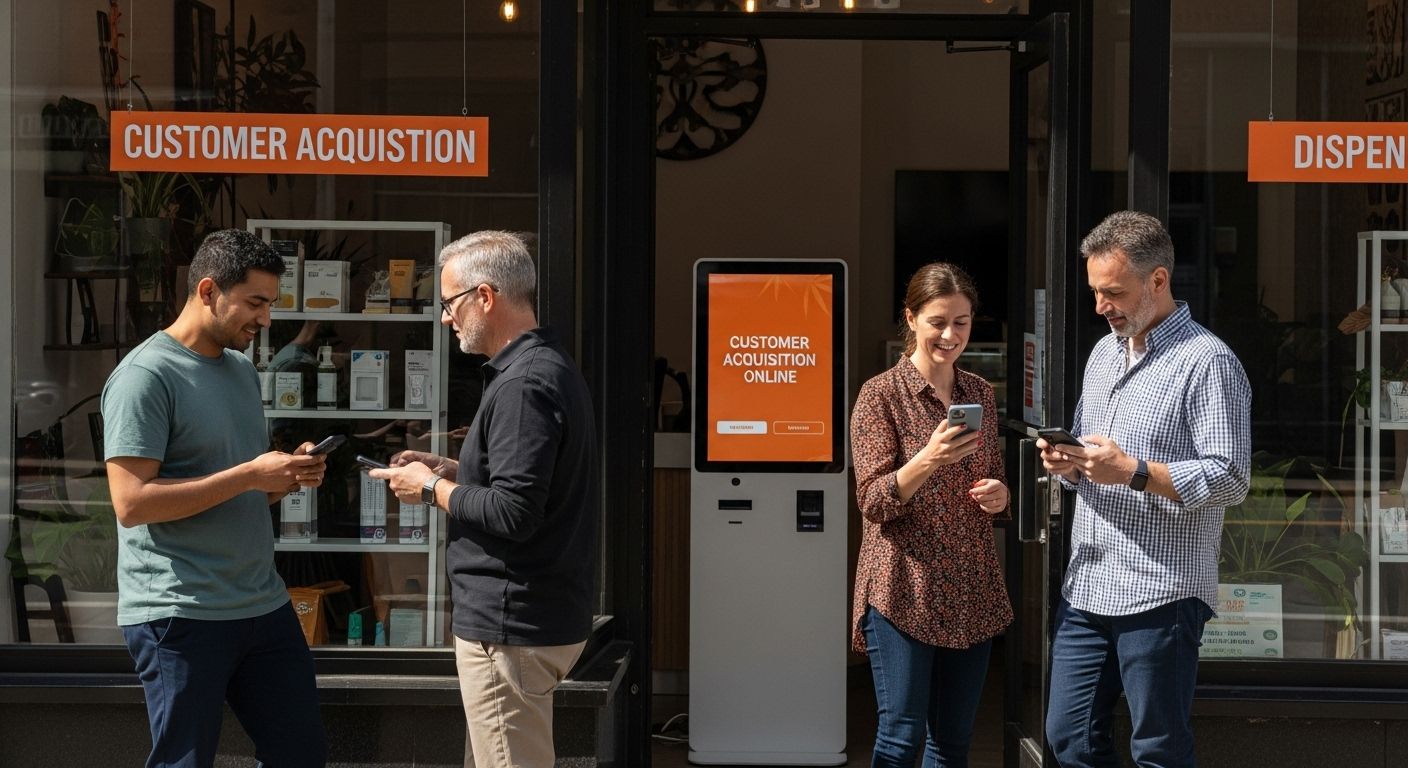Standing out online isn’t easy. With top sites in search engine results pages (SERPs) capturing most clicks, it’s essential to have a solid strategy. This article will show you ten SEO strategies to increase organic traffic to your site in 2024.
Feel free to follow along and implement these strategies yourself, or partner with the experts at Juiced Digital Agency to fully manage your SEO—so you know your business will grow significantly with the right approach in place.
Key Takeaways
- Making your content match what people search for increases traffic. Use tools to find common questions and include them in your FAQs.
- Use AI tools like JASPER for writing better content quickly. Voice search is also important, so use long phrases that sound natural.
- Videos keep visitors on your site longer. Make sure they’re short and clear, and add keywords to the title and description.
- Getting links from good websites makes yours look trustworthy. Try guest blogging or fixing broken links to get these backlinks.
- For local SEO, make special pages for each location you serve. Also, check that your business shows up correctly in online directories.
Align Content with Search Intent
To align content with search intent, it’s vital to create content that directly addresses what users are searching for. This means optimizing for “People Also Ask” and FAQ sections and ensuring that the content effectively answers user queries.
Optimize for “People Also Ask” and FAQ sections
Optimizing for “People Also Ask” and FAQ sections is smart. It helps your website show up more in Google searches.
- Focus on common questions related to your topic: Use tools like Ahrefs to find out what people are asking online. This helps you know what answers to provide.
- Write clear, direct answers: Keep your sentences short and easy to understand. This makes it easier for Google to use your content in “People Also Ask” boxes.
- Include a FAQ page on your site: Answer the most asked questions about your service or product. Use simple language that everyone can understand.
- Use keywords in your answers: Find out which words people use the most when they ask questions about your topic. Add these words to your FAQs and “People Also Ask” answers.
- Update your FAQs often: Stay current with what people want to know by using tools like Google Search Console. This shows you new trends and questions that are coming up.
- Structure your content well: Use headings for each question on your FAQ page. Make sure the text under each heading answers the question right away.
- Link from FAQs to other pages: If an answer needs more detail, link to another page on your site with more information. This helps users find what they need fast.
- Keep track of performance: Use Google Analytics to see how well your FAQ and “People Also Ask” content is doing. Look at clicks, views, and how high you rank in search results.
Create content that answers user queries effectively
Writing good content starts with knowing what your audience wants to read. Use keywords and focus on what users are searching for. This makes sure people who find your pages are the ones really interested in them.
For example, using keyword research tools can show you what words and phrases people use a lot. Then, include these terms in your articles or blog posts.
Also, make sure your content directly solves problems or answers questions that readers might have. This could mean making FAQ sections or step-by-step guides based on common searches.
The goal is to be the best match for what people are looking for online. When you do this well, search engines will notice and show your site to more readers, helping you reach more interested leads.
Leverage Advanced Keyword Strategies

Advanced keyword strategies involve implementing semantic search and topic clusters to improve search engine rankings. This ensures a focus on high-intent keywords for better conversion, contributing to organic SEO success.
Implement semantic search and topic clusters
Semantic search is all about understanding user intent and the context of search queries. Tools like SEMrush and Ahrefs can help you find out what people are looking for when they type words into Google.
Then, you use these insights to make clusters of topics on your website. This means creating groups of content that cover a wide area of interest but link back to each other in meaningful ways.
It makes it easier for Google to see your site as an authority on those topics.
Focusing on semantic search also means choosing the right keywords that match what users really want to know. With tools like JASPER and COPYSMITH, creating content that answers these needs becomes more straightforward.
You’re not just guessing; you’re using AI-powered insights to craft articles, videos, or infographics that hit right at the heart of user questions. This approach leads to better rankings in SERPs (search engine result pages) because you’re aligning closely with what Google thinks users want.
Focus on high-intent keywords for better conversion
Moving from semantic search and topic clusters, focusing on high-intent keywords is key. These are words or phrases potential buyers use when they’re ready to buy a product or use a service.
High-intent keywords lead to better conversions because they match what the user wants with what your site offers. Using tools like Google’s Keyword Planner helps find these powerful keywords.
For example, instead of just using “shoes” as a keyword, “buy running shoes online” captures users closer to making a purchase. This means your content should answer specific questions that someone ready to buy might ask.
Tools like Google Search Console show which high-intent keywords drive traffic to your site and lead to sales. By targeting these keywords in your SEO strategy, you can attract more visitors who are likely to convert into customers.
Enhance On-Page SEO

To enhance on-page SEO, focus on optimizing title tags and meta descriptions for better visibility in search results. Internal linking structure should be improved to guide users to relevant content seamlessly.
Optimize title tags, meta descriptions, and headings
Optimizing title tags, meta descriptions, and headings boosts your web page’s visibility in search engines. This makes your site more clickable in search results.
- Keep page title tags under 60 characters. This ensures they show fully in search results.
- Write meta descriptions within 160 characters to grab attention.
- Use keyword-rich titles that match what people search for.
- Craft enticing meta descriptions that act like ads for your content.
- Include main keywords at the start of title tags for better ranking.
- Use unique titles for each page to avoid confusion in search results.
- Headings should outline the content clearly and include target keywords.
- For headings, use H1 for the main title and H2 or H3 for subheadings to structure content well.
- Make sure the title tag is appealing to increase click-through rates (CTR).
- Update old title tags and meta descriptions to keep them fresh and relevant.
By following these steps, you make it easier for Google and visitors to understand what your page is about, leading to higher rankings and more traffic.
Improve internal linking structure
Improving your site’s internal linking structure is key to better SEO. It makes your website easier for search engines and people to navigate.
- Use clear and relevant anchor text.
- Anchor text helps users know what to expect when they click a link. Make it natural and related to the page content.
- Link high-priority pages from the homepage.
- Your homepage has the most power. Use it to boost important pages by linking them directly from there.
- Add links in your content to other related posts.
- When writing a blog or article, include links to other parts of your site that offer more on the topic.
- Make sure all important pages are linked.
- Some pages might be hidden deep in your site. Check that they’re reachable through at least one internal link.
- Use a tool like Google Search Console.
- This tool shows how web crawlers see your site. It can point out where you need more or better links.
- Fix broken links regularly.
- Broken links hurt user experience and SEO. Find and fix them with tools like Ahrefs.
- Optimize navigational structure.
- Organize menus so users can easily find what they’re looking for with minimal clicks.
- Create a sitemap.
- A sitemap lists all your pages, making it easier for search engines to crawl your site effectively.
- Employ breadcrumbs on every page.
- Breadcrumbs show the path back to the homepage from wherever a visitor is on your site, improving usability and SEO.
- Regularly audit internal links.
- Check for opportunities to add new links and remove outdated ones as part of ongoing SEO maintenance.
Optimize for Mobile and Page Experience

To boost your website’s performance, it is crucial to optimize for mobile and enhance page experience. This involves ensuring your site is mobile-friendly and improving its speed and Core Web Vitals.
If done well, this can increase user engagement and help improve your search rankings.
Ensure site is mobile-friendly
Optimizing your website for mobile usage is essential for an optimal user experience. The majority of individuals utilize their phones for online inquiries. Hence, a rapidly loading site that appears correct on their displays would probably increase their visit duration.
Features like Google’s Mobile-Friendly Test can assess the effectiveness of your site on mobile platforms. This measure also aids in enhancing your ranking in search results.
Boosting site speed is another crucial task. Quick loading sites satisfy visitors and lower bounce rates. Resources like Pagespeed Insights can help identify areas for enhancement.
Keep in mind, online, time is of the essence to retain someone’s interest.
Improve site speed and Core Web Vitals
Site speed and Core Web Vitals are key for a good user experience. Faster sites win more visits and keep people happy.
- Test your site speed using tools like PageSpeed Insights. This tool helps you see how fast your page loads.
- Compress images before uploading them. Use formats like WebP instead of PNGs to make files smaller without losing quality.
- Cut down on the use of heavy JavaScript. Some scripts slow down your site, so use them wisely.
- Enable browser caching. This lets visitors’ browsers store parts of your site so it loads faster next time they visit.
- Optimize your server response time. Look for hosting options that offer fast server speeds.
- Use a Content Delivery Network (CDN). CDNs distribute your content across many servers around the world, making it quicker to access from anywhere.
- Streamline your code by getting rid of extra spaces, line breaks, and indentations to make your website’s files smaller.
- Prioritize loading of important content first with lazy loading. This means pictures and videos load only as people scroll to them, not all at once.
- Fix broken links to improve site crawling and indexing by search engines. Broken links can slow down site performance.
- Adjust image size based on display size with responsive design techniques so mobile users don’t download desktop-sized images.
- Check Core Web Vitals in Google Search Console regularly to monitor loading performance, interactivity, and visual stability of pages.
Improving these factors makes sure users enjoy visiting your website, leading to better search engine rankings and more organic traffic.
Utilize AI and New Technologies
Incorporate AI tools for content optimization and creation. Optimize content for voice search.
AI tools for content creation and optimization
AI tools like JASPER and COPYSMITH are changing how we create content in 2024. These programs help make articles, blogs, and even social media posts better. They use artificial intelligence to understand what people want to read.
This helps improve your site’s SEO by making content that matches search queries.
Using these tools also speeds up writing time. Instead of spending hours researching, you can focus on polishing your work. Plus, they suggest keywords that boost Google rankings. This is a smart move for anyone wanting more visitors without extra hassle.
Voice search optimization
Moving on from using AI tools for content creation and optimization, let’s now focus on voice search optimization. It’s about making your website content compatible with how people ask questions verbally when they use devices such as smart speakers or smartphones.
For this, long-tail keywords play a crucial role. These are longer and more specific phrases compared to regular keywords. They mirror the way individuals speak naturally rather than type into a search engine.
In addition to long-tail keywords, structured data is important for voice search optimization. Structured data provides context to search engines in understanding what your content is about.
Incorporating schema markups can help search engines present your information in new ways that cater to voice searches effectively. So, integrating this within your website will enhance its visibility in voice searches.
Both long-tail keywords and structured data are essential components of ensuring your website ranks well when users conduct voice searches.

Content Regularity and Relevance
Consistently publishing fresh content and keeping existing posts up to date is vital. This helps in staying relevant to users and search engines, improving your website’s visibility.
Publish content consistently
Consistently posting content on your website will help you maintain visibility to search engines and attract more visitors over time. By regularly updating your site with new and relevant information, you can enhance your chances of ranking higher in search results.
According to SEO experts, frequent updates indicate to search engines that your site is active and engaging, making it more probable for them to crawl and index the new content.
Consistency also fosters confidence with your audience; when they see a consistent flow of fresh, useful content on your site, they are more likely to return for more. Moreover, regular posting can increase the probability of other websites linking back to yours as a valuable resource.
This not only drives traffic but also enhances your authority in the eyes of both users and search engines.
Update and refresh old content regularly
Regularly updating and refreshing old content is essential to boost organic traffic. This simple action helps in improving search engine rankings, driving more visitors to your website.
It’s not just about new content; older content needs attention too. Search engines favor websites with fresh and relevant material, so staying on top of this can make a real difference.
By keeping the existing information up-to-date and accurate, you enhance user experience, which leads to longer dwell times on your site. Longer dwell times indicate that users are engaging with your content, providing signals to search engines that your site has valuable information.
Old content can still be relevant and drive traffic if it’s regularly maintained.
Ensuring that your old posts continue to provide value will help maintain a healthy flow of organic traffic over time. The effort put into updating older posts is well worth the organic traffic they can generate.
Implementing these strategies plays a key role in maintaining an effective SEO approach for 2024.
Video SEO and Visual Content
When it comes to optimizing for video SEO and visual content, concentrate on creating engaging videos customized for your target audience. Include compelling visuals and optimize video elements to improve user experience and enhance search rankings.
Create and optimize video content
Crafting and optimizing video content is crucial to engage your audience in 2024. Videos can enhance user experience and increase the time people spend on your site, which benefits your search rankings.
When creating videos, keep in mind that most consumers prefer short and visually appealing content. Ensure the inclusion of relevant keywords in the video title, description, and tags to boost its visibility in search results.
Remember to create transcripts for your videos – it’s beneficial for accessibility and helps search engines understand the video content better.
Furthermore, when optimizing video content for SEO, consider including an engaging thumbnail with a descriptive filename. Video schema markup can also enhance visibility by providing additional information about your video in search engine results pages (SERP).
As technology advances into 2024, AI tools for creating and optimizing video content are becoming more accessible- these intelligent technologies assist in analyzing data on consumer behavior trends towards specific types of online visual interactions.
Make content visually engaging
To capture consumer attention, it’s crucial to make your content visually appealing. Use high-quality images and videos that complement your message. Optimize the file format for web use, compressing without compromising quality.
Incorporate descriptive alternative text to enhance accessibility and search engine optimization efforts. Utilize tools like image compression techniques and JPEG formats for efficient visual presentation.
Moreover, harness AI-driven technologies for visual content creation while optimizing video SEO strategies for better reach and engagement levels. By doing so, you can significantly enrich user experience (UX) while improving overall site performance.
Build and Sustain Backlink Profile
To boost your website’s credibility, consistently earn links from reputable websites. Implement guest blogging and collaborate with industry influencers to expand your backlink profile effectively.

Earn authoritative backlinks
Earning authoritative backlinks from reputable websites is crucial for boosting your site’s credibility and trustworthiness. Backlinks act as a vote of confidence in the eyes of search engines, indicating that other sites find your content valuable.
This can lead to higher rankings in search results, driving more organic traffic to your website. By focusing on creating high-quality and relevant content, you can naturally attract authoritative backlinks from industry leaders, influencers, and trusted sources.
Moreover, engaging in guest blogging or collaborating with reputable websites can also help you secure valuable backlinks that enhance your website’s authority.
Incorporating strategic link-building tactics such as creating shareable infographics or conducting original research studies can also attract attention from other websites looking to cite reliable information.
Be mindful to steer clear of manipulative link schemes that violate search engine guidelines, as this could result in penalties rather than benefits. By staying committed to producing valuable content and fostering genuine relationships within your industry, you’ll organically earn the authoritative backlinks needed to boost your SEO efforts effectively.
Implement guest blogging and broken link building
To earn authoritative backlinks, you can implement guest blogging and broken link building. Here’s how:
- Guest Blogging:
- Write high-quality content for other websites in your industry
- Include a link back to your own website within your guest post
- Build relationships with other bloggers and website owners to secure guest posting opportunities
- Broken Link Building:
- Find broken links on reputable websites in your niche
- Create similar or better content than the broken link’s target page
- Reach out to the site owner, informing them of the broken link and suggesting your content as a replacement
Local SEO Optimization
To optimize for local search, create landing pages customized for specific locations and ensure accurate listings in directories. Moreover, incorporate technical SEO strategies to improve visibility within the local area.
Optimize for local search with landing pages and listings
To enhance your online visibility within your local area, you can optimize for local search using landing pages and listings. Here’s how:
- Create Dedicated Landing Pages:
- Develop separate landing pages customized to specific locations or local services.
- Include location-specific keywords and information relevant to the target audience.
- Claim and Optimize Google My Business Listing:
- Ensure all business information is accurate, including contact details and opening hours.
- Add high-quality images to attract potential customers.
- Utilize Local Keywords:
- Integrate local keywords naturally into your content to improve local search rankings.
- Focus on terms that locals would use when searching for products or services.
- Encourage Customer Reviews:
- Prompt satisfied customers to leave positive reviews on platforms such as Google My Business and Yelp.
- Respond to reviews, demonstrating engagement with the community.
- Leverage Local Directories and Citations:
- Ensure consistent NAP (Name, Address, Phone Number) across all online directories.
- List your business in relevant local directories and industry-specific platforms.
- Implement Structured Data Markup:
- Use schema markup to provide search engines with detailed information about your business, such as operating hours, address, and customer reviews.
- Optimize Website Content for Local Relevance:
- Feature locally focused content like event sponsorships or community involvement.
- Highlight any neighborhood-specific offers or promotions.
- Engage with Local Community Events:
- Sponsor or participate in local events and activities to increase brand visibility within the community.
- Share these involvements on social media platforms to extend reach further.
By incorporating these strategies, you can significantly improve your business’s visibility within the local search landscape while connecting with potential customers effectively.
Technical SEO for local search
When it comes to Technical SEO for local search, it’s crucial to optimize your website to attract local customers. Here are the key strategies:
- Local Keyword Optimization: Include location-specific keywords in your website content to improve visibility in local searches.
- Google My Business Listing: Claim and optimize your Google My Business listing with accurate information about your business, including address, phone number, and business hours.
- Local Structured Data Markup: Implement structured data markup on your website to provide search engines with detailed information about your business, such as address, phone number, and operating hours.
- Online Reviews Management: Encourage and manage online reviews from local customers to build trust and credibility for your business in local search results.
- Local Link Building: Cultivate relationships with local businesses and organizations to earn backlinks from reputable sources within your community.
- Mobile Optimization for Local Searches: Ensure that your site is mobile-friendly and provides a smooth user experience for mobile users searching for local businesses.
- Location Pages Creation: Develop individual landing pages targeting specific locations where you operate to improve visibility in localized search results.
- NAP Consistency: Maintain consistent Name, Address, and Phone (NAP) information across all online platforms and directories to establish trust with both users and search engines.
Monitor and Adapt to Algorithm Updates
Stay updated with the latest changes in Google’s algorithm. Adapt your SEO strategies based on these updates to stay ahead.
Stay updated with Google’s algorithm changes
Google updates its search algorithm 500-600 times every year. This means that without staying informed about these changes, your SEO strategies may become outdated. Being aware of the latest Google algorithm updates is crucial to ensure that your website ranks well in search results and continues to attract organic traffic.
By adjusting your strategies according to the latest SEO news and updates, you can stay ahead in the constantly changing world of online visibility.
Adjusting to these frequent changes will enable you to customize your content marketing techniques using semantic search, topic clusters, and advanced keyword strategies effectively.
In addition, AI tools for content creation and optimization should be integrated to keep pace with Google’s evolving algorithms. Efficiently optimizing for mobile experience and page speed based on Core Web Vitals is crucial due to Google’s emphasis on user-friendly websites within its algorithm criteria.
Furthermore, regularly updating old content helps align with changing requirements from new algorithm guidelines and maintaining a relevant ranking among competitors.
Adapt strategies based on SEO news and updates
Stay updated with the latest changes in search engine algorithms. These updates can impact your website’s visibility and ranking. By staying informed, you can adjust your SEO strategies to maintain or improve your organic traffic.
For instance, Google frequently updates its algorithms to provide users with better search results. Understanding these changes will help you align your strategies with Google’s evolving standards, making it crucial to regularly adapt tactics based on SEO news and updates.
This diligence ensures that your website remains optimized for higher visibility and improved organic traffic growth.
Conclusion
In conclusion, utilizing these top 10 SEO strategies can significantly enhance organic traffic in 2024. By aligning content with search intent, leveraging advanced keyword strategies, and improving on-page SEO, your website’s visibility and reach can expand.
Optimizing for mobile and page experience is crucial for effectively engaging users. Moreover, integrating AI and new technologies to produce regular, relevant content will strengthen your site’s authority. Video SEO and visual content play a crucial role in capturing audience attention.
Developing a sustainable backlink profile along with local SEO optimization is vital for attracting qualified traffic. Finally, monitoring and adapting to algorithm updates will ensure that your strategies remain effective in the ever-evolving world of search engine optimization.
Juiced Digital Agency can fully manage your SEO to grow your business and help you achieve sustainable results.



